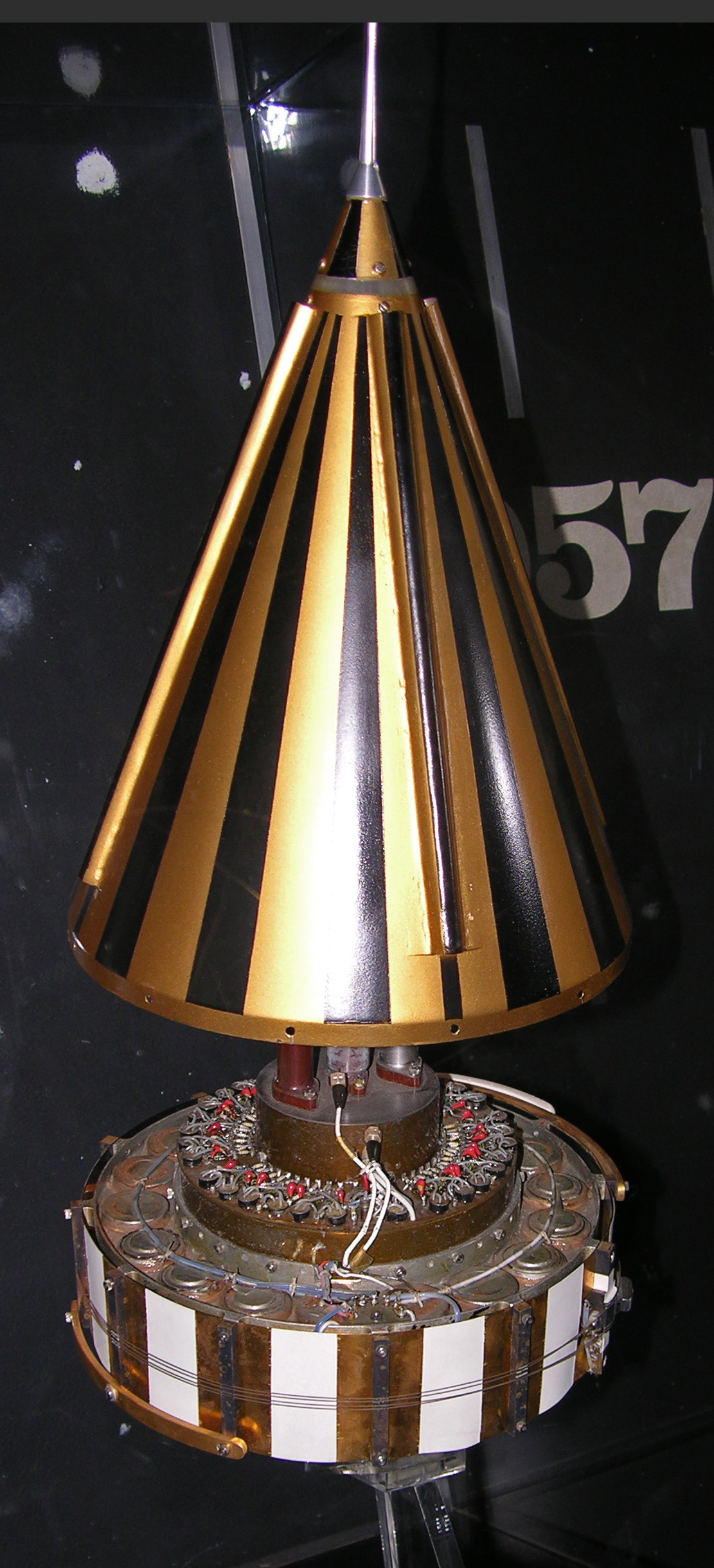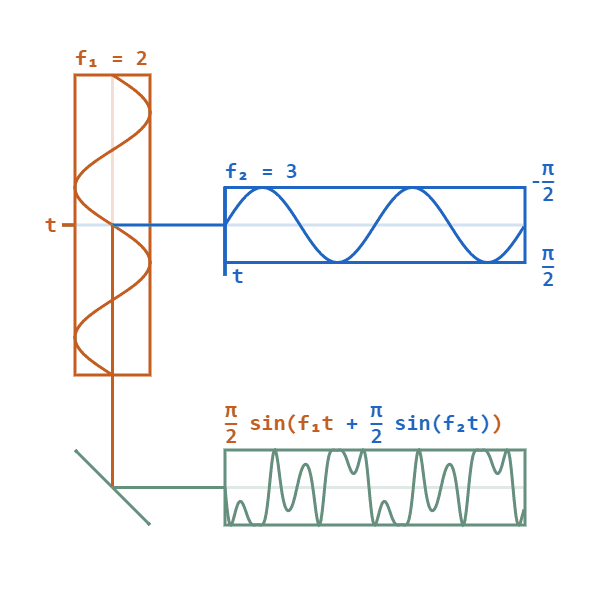|
Pioneer 4
Pioneer 4 was an American spin-stabilized uncrewed spacecraft launched as part of the Pioneer program on a lunar flyby trajectory and into a heliocentric orbit making it the first probe of the United States to escape from the Earth's gravity. It carried a payload similar to ''Pioneer 3'': a lunar radiation environment experiment using a Geiger–Müller tube detector and a lunar photography experiment. It passed within 58,983 km of the Moon's surface. However, ''Pioneer 4'' did not come close enough to trigger its photoelectric sensor. The spacecraft was still in solar orbit as of 1969. It was the only successful lunar probe launched by the U.S. in 12 attempts between 1958 and 1963; only in 1964 would Ranger 7 surpass its success by accomplishing all of its mission objectives. After the Soviet Luna 1 probe conducted the first successful flyby of the Moon on 3 January 1959, the pressure felt by the US to succeed with a lunar mission was enormous, especially since American ... [...More Info...] [...Related Items...] OR: [Wikipedia] [Google] [Baidu] |
The Moon
The Moon is Earth's only natural satellite. It is the List of natural satellites, fifth largest satellite in the Solar System and the largest and most massive relative to its parent planet, with a diameter about one-quarter that of Earth (comparable to the width of Australia (continent), Australia). The Moon is a planetary-mass object with a planetary differentiation, differentiated Terrestrial planet, rocky body, making it a satellite planet under the geophysical definition of planet, geophysical definitions of the term and larger than all known dwarf planets of the Solar System. It lacks any significant Atmosphere of the Moon, atmosphere, hydrosphere, or Magnetic field of the Moon, magnetic field. Its surface gravity is about one-sixth of Earth's at , with Jupiter's moon Io (moon), Io being the only satellite in the Solar System known to have a higher surface gravity and density. The Moon orbits Earth at an lunar distance (astronomy), average distance of , or about 30 tim ... [...More Info...] [...Related Items...] OR: [Wikipedia] [Google] [Baidu] |
Photoelectric Sensor
A photoelectric sensor is a device used to determine the distance, absence, or presence of an object by using a light transmitter, often infrared, and a photoelectric receiver. They are largely used in industrial manufacturing. There are three different useful types: opposed (through-beam), retro-reflective, and proximity-sensing (diffused). Types A self-contained photoelectric sensor contains the optics, along with the electronics. It requires only a power source. The sensor performs its own modulation, demodulation, amplification, and output switching. Some self-contained sensors provide such options as built-in control timers or counters. Because of technological progress, self-contained photoelectric sensors have become increasingly smaller. Remote photoelectric sensors used for remote sensing contain only the optical components of a sensor. The circuitry for power input, amplification, and output switching is located elsewhere, typically in a control panel. This allows ... [...More Info...] [...Related Items...] OR: [Wikipedia] [Google] [Baidu] |
Juno I
The Juno I was a four-stage American space launch vehicle, used to launch lightweight payloads into low Earth orbit. The launch vehicle was used between January 1958 to December 1959. The launch vehicle was a member of the Redstone launch vehicle family, and was derived from the Jupiter-C sounding rocket. It is commonly confused with the Juno II launch vehicle, which was derived from the PGM-19 Jupiter medium-range ballistic missile. In 1958, a Juno I launch vehicle was used to launch America's first satellite, Explorer 1. History Developed as a part of the Explorer Project, the original goal for the launch vehicle was to place an artificial satellite into orbit. Following the Soviet Union's launch of Sputnik 1 on October 4, 1957 (and the resulting " Sputnik crisis") and the failure of the Vanguard 1 launch attempt, the program received funding to match the Soviet space achievements. The launch vehicle family name was proposed in November 1957 by Jet Propulsion Labora ... [...More Info...] [...Related Items...] OR: [Wikipedia] [Google] [Baidu] |
Juno II Ignition With Pioneer 4
Juno commonly refers to: *Juno (mythology), the Roman goddess of marriage and queen of the gods * ''Juno'' (film), 2007 Juno may also refer to: Arts, entertainment and media Fictional characters *Juno, in the film '' Jenny, Juno'' *Juno, in the film ''Beetlejuice'' *Juno, in the manga series ''Beastars'' * Sailor Juno, a character in the manga series ''Sailor Moon'' * Juno (''Dune''), in the ''Dune'' universe *Juno Boyle, in the play '' Juno and the Paycock'' *Juno, in the book ''Juno of Taris'' by Fleur Beale * Juno, a game character in ''Assassin's Creed'' * Juno, in ''The Banner Saga'' game * Juno Eclipse, in '' The Force Unleashed'' game * Mega Man Juno, in ''Mega Man Legends'' game Music Musicians and groups * Juno (band), an American musical group *Juno (rapper), Finnish hip hop artist * Juno (singer), South Korean singer Songs * "Juno", a song by Life Without Buildings from ''Any Other City'', 2001 * "Juno", a song by Running Touch, 2021 * "Juno", a song by Tesseract fr ... [...More Info...] [...Related Items...] OR: [Wikipedia] [Google] [Baidu] |
Serial Number
A serial number is a unique identifier assigned incrementally or sequentially to an item, to ''uniquely'' identify it. Serial numbers need not be strictly numerical. They may contain letters and other typographical symbols, or may consist entirely of a character string. Applications of serial numbering Serial numbers identify otherwise identical individual units, thereby serving various practical uses. Serial numbers are a deterrent against theft and counterfeit products, as they can be recorded, and stolen or otherwise irregular goods can be identified. Banknotes and other transferable documents of value bear serial numbers to assist in preventing counterfeiting and tracing stolen ones. They are valuable in quality control, as once a defect is found in the production of a particular batch of product, the serial number will identify which units are affected. Some items with serial numbers are automobiles, firearms, electronics, and appliances. Smartphones and other S ... [...More Info...] [...Related Items...] OR: [Wikipedia] [Google] [Baidu] |
Phase Modulation
Phase modulation (PM) is a modulation pattern for conditioning communication signals for transmission. It encodes a message signal as variations in the instantaneous phase of a carrier wave. Phase modulation is one of the two principal forms of angle modulation, together with frequency modulation. In phase modulation, the instantaneous amplitude of the baseband signal modifies the phase of the carrier signal keeping its amplitude and frequency constant. The phase of a carrier signal is modulated to follow the changing signal level (amplitude) of the message signal. The peak amplitude and the frequency of the carrier signal are maintained constant, but as the amplitude of the message signal changes, the phase of the carrier changes correspondingly. Phase modulation is widely used for transmitting radio waves and is an integral part of many digital transmission coding schemes that underlie a wide range of technologies like Wi-Fi, GSM and satellite television. It is also used fo ... [...More Info...] [...Related Items...] OR: [Wikipedia] [Google] [Baidu] |
Goldstone Deep Space Communications Complex
The Goldstone Deep Space Communications Complex (GDSCC), commonly called the Goldstone Observatory, is a satellite ground station located in Fort Irwin in the U.S. state of California. Operated by NASA's Jet Propulsion Laboratory (JPL), its main purpose is to track and communicate with interplanetary space missions. It is named after Goldstone, California, a nearby gold-mining ghost town. The station is one of three satellite communication stations in the NASA Space Communications and Navigation (SCaN) program’s Deep Space Network (DSN), whose mission is to provide the vital two-way communications link that tracks and controls interplanetary spacecraft and receives the images and scientific information they collect. The others are the Madrid Deep Space Communications Complex in Spain and the Canberra Deep Space Communication Complex in Australia. These three stations are located at separations of approximately 120° longitude so that as the Earth rotates a spacecraft wil ... [...More Info...] [...Related Items...] OR: [Wikipedia] [Google] [Baidu] |
Photodetector
Photodetectors, also called photosensors, are sensors of light or other electromagnetic radiation. There is a wide variety of photodetectors which may be classified by mechanism of detection, such as Photoelectric effect, photoelectric or photochemical effects, or by various performance metrics, such as spectral response. Semiconductor-based photodetectors typically photo detector have a p–n junction that converts light photons into current. The absorbed photons make electron–hole pairs in the depletion region. Photodiodes and photo transistors are a few examples of photo detectors. Solar cells convert some of the light energy absorbed into electrical energy. Types Photodetectors may be classified by their mechanism for detection: * Photoemission or photoelectric effect: Photons cause electrons to transition from the conduction band of a material to free electrons in a vacuum or gas. * Thermal: Photons cause electrons to transition to mid-gap states then decay back to lo ... [...More Info...] [...Related Items...] OR: [Wikipedia] [Google] [Baidu] |
Mercury Battery
A mercury battery (also called mercuric oxide battery, mercury cell, button cell, or Ruben-Mallory) is a non-rechargeable electrochemical battery, a primary cell. Mercury batteries use a reaction between mercuric oxide and zinc electrodes in an alkaline electrolyte. The voltage during discharge remains practically constant at 1.35 volts, and the capacity is much greater than that of a similarly sized zinc-carbon battery. Mercury batteries were used in the shape of button cells for watches, hearing aids, cameras and calculators, and in larger forms for other applications. For a time during and after World War II, batteries made with mercury became a popular power source for portable electronic devices. Due to the content of toxic mercury and environmental concerns about its disposal, the sale of mercury batteries is now banned in many countries. Both ANSI and IEC have withdrawn their standards for mercury batteries. History The mercury oxide-zinc battery system was kn ... [...More Info...] [...Related Items...] OR: [Wikipedia] [Google] [Baidu] |
Fiberglass
Fiberglass (American English) or fibreglass (Commonwealth English) is a common type of fiber-reinforced plastic using glass fiber. The fibers may be randomly arranged, flattened into a sheet called a chopped strand mat, or woven into glass cloth. The plastic matrix may be a thermoset polymer matrix—most often based on thermosetting polymers such as epoxy, polyester resin, or vinyl ester resin—or a thermoplastic. Cheaper and more flexible than carbon fiber, it is stronger than many metals by weight, non- magnetic, non-conductive, transparent to electromagnetic radiation, can be molded into complex shapes, and is chemically inert under many circumstances. Applications include aircraft, boats, automobiles, bath tubs and enclosures, swimming pools, hot tubs, septic tanks, water tanks, roofing, pipes, cladding, orthopedic casts, surfboards, and external door skins. Other common names for fiberglass are glass-reinforced plastic (GRP), glass-fiber reinforced plastic (GFRP) or GF ... [...More Info...] [...Related Items...] OR: [Wikipedia] [Google] [Baidu] |
Luna 1
''Luna 1'', also known as ''Mechta'' (russian: Мечта , '' lit.'': ''Dream''), ''E-1 No.4'' and ''First Lunar Rover'', was the first spacecraft to reach the vicinity of Earth's Moon, and the first spacecraft to be placed in heliocentric orbit. Intended as an impactor, ''Luna 1'' was launched as part of the Soviet Luna programme in 1959. A malfunction in the ground-based control system caused an error in the upper stage rocket's burn time, and the spacecraft missed the Moon by 5900 km (more than three times the Moon's radius). ''Luna 1'' became the first human-made object to reach heliocentric orbit and was dubbed "Artificial Planet 1"https://nssdc.gsfc.nasa.gov/nmc/spacecraft/display.action?id=1959-012A - 27 February 2020 and renamed ''Mechta'' (''Dream''). ''Luna 1'' was also referred to as the "First Cosmic Ship", in reference to its achievement of Earth escape velocity. Background ''Luna 1'' was the fourth and final spacecraft of the Ye-1 spacecraft series. The pr ... [...More Info...] [...Related Items...] OR: [Wikipedia] [Google] [Baidu] |

.png)



